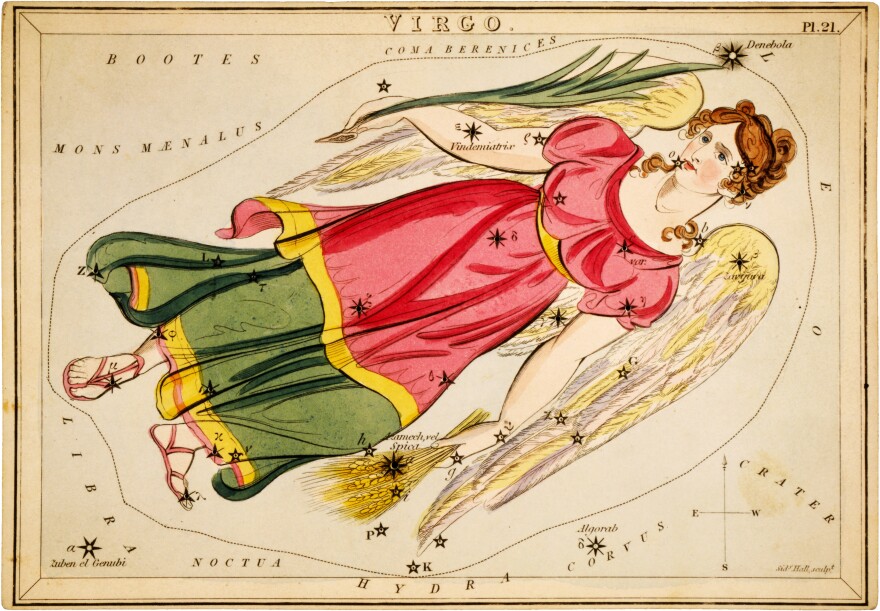Do you know your zodiac sign, and would you know how to find it in the night sky? To help us learn about the astronomy and mythology behind the zodiac, UW-Milwaukee’s Manfred Olson Planetarium has been hosting a new series of events. This month, they are highlighting Virgo.
The easiest way to find Virgo is to look for the star Arcturus in the west, according to planetarium director Jean Creighton.
"Arcturus is so bright, it has a reddish hue to it, and you know you've got it because you use the nemonic 'arc to Arcturus,'" she explains. If you find the Big Dipper in the sky and follow the arc of its tail, you hit Arcturus and if you keep going in the direction it will lead you to the brightest star of Virgo: Spica. "So the magic phrase is arc to Arcturus and spy Spica," says Creighton.
Virgo is the name for Persephone, who was the daughter of Demeter, the goddess of agriculture. Pluto, the god of the underworld, kidnapped Persephone and took her away to the underworld. Demeter was desperate to find her daughter and stopped caring about the crops in her daughter's absence, causing great distress for the humans. The Greek god Zeus was torn between his sister Demeter and his brother Pluto, so he decided that Persephone would spend half the year with her husband Pluto and half the year with her mother Demeter.
"[This] is how ancient Greeks explained the seasons. When Persephone, or Virgo if you will, is in the sky then the weather is good and things are growing," Creighton notes, "and when Virgo is up when we can't see her, then the growing season has come to an end."
Most astronomers know Virgo for the galaxies housed within it, says Creighton, but Virgo is also notable because the first exoplanet was discovered within it 30 years ago.
"This was the very first exoplanet we found, and subsequently we've found over 5,000 — and the pace has really picked up within the last decade," she notes. "The first few exoplanets were once, a couple a year, and now there are probably a couple a day? So, it seems an appropriate object to find in Virgo since Virgo is associated with growing things."
The Manfred Olson Planetarium at UW-Milwaukee's live, interactive show, Constellations of the Zodiac: Virgo, takes place Friday evening. There’s also a free outdoor Stars and S’mores event to gaze at summer constellations on Thursday. You can find more information about both events here.
_







